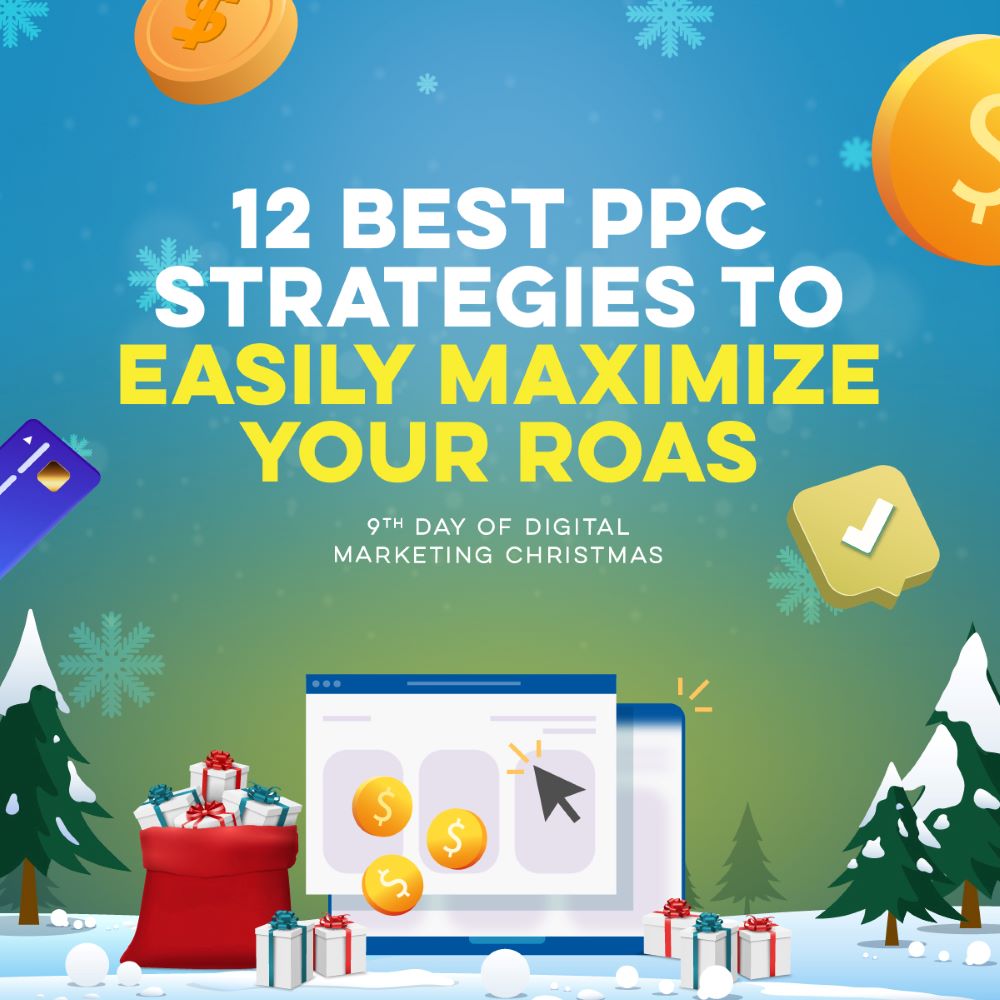On the ninth day of Christmas One Click gave to me…a guide to PPC strategies!
Are you ready to take your online business to new heights? Well, you’ve come to the right place! Today, we’re going to dive into the exciting world of PPC advertising and explore the 12 best strategies that can help you maximize your Return on Ad Spend (ROAS). Whether you’re a beginner or have dabbled in PPC before, these strategies will provide valuable insights that can elevate your online marketing game. Let’s get started!
What is PPC advertising?
PPC stands for Pay-Per-Click advertising, a digital marketing model where advertisers pay a fee each time their ad is clicked. It’s an effective method of driving traffic and generating leads for businesses as it allows them to display ads on search engines, social media platforms, websites, and other digital channels.
Types of PPC Advertising:
- Search Advertising:
This type of advertising displays text-based ads on search engine results pages (SERPs) when users search for specific keywords. It’s an excellent way to target potential customers who are actively searching for products or services related to your business. - Display Advertising:
Display ads utilize visuals such as images, banners, and videos to capture the attention of potential customers across a network of websites. This type of advertising is great for brand awareness and reaching a wider audience. - Social Media Advertising:
Social media platforms like Facebook, Instagram, Twitter, and LinkedIn offer effective PPC advertising options. These platforms allow businesses to target specific demographics based on users’ interests, behaviors, and connections.
12 PPC Advertising Strategies for Beginners:
- Define Clear Goals:
Before diving into any campaign, clearly define your goals. Are you looking to drive sales? Increase brand awareness? Generate leads? Identifying your objectives will help shape your overall strategy. - Keyword Research:
Thoroughly research relevant keywords that align with your business and target audience. Use tools like Google Keyword Planner or SEMrush to identify high-volume and low-competition keywords. - Ad Copy Optimization:
Craft compelling ad copy that grabs attention, communicates your unique selling proposition, and includes a strong call-to-action (CTA). Tailor your copy to resonate with your target audience. - Landing Page Optimization:
Ensure that the landing page you direct users to is relevant, user-friendly, and aligned with your ad copy. Optimize it for conversion by including clear CTAs and relevant information. - Ad Extensions:
Take advantage of ad extensions offered by platforms like Google Ads. These extensions provide additional information about your business, such as phone numbers, site links, location information, and more. - A/B Testing:
Conduct A/B tests on various elements of your campaigns to identify what works best for your target audience. Test different headlines, images, CTAs, landing pages, and ad formats to maximize performance. - Remarketing:
Implement remarketing campaigns to re-engage users who have previously visited your website but haven’t converted yet. This strategy helps you stay top-of-mind and encourages them to take action. - Geo-Targeting:
Leverage geo-targeting options to reach customers in specific locations where you have a presence or want to expand. This strategy ensures that your ads are seen by the right audience at the right place. - Device Targeting:
Analyze data from previous campaigns to determine which devices (desktops, mobiles, tablets) drive the most conversions for your business. Optimize bids and adjust targeting accordingly. - Ad Scheduling:
Identify peak hours/days when your target audience is most active online and schedule ads during those times for maximum visibility and engagement. - Negative Keywords:
Regularly review search term reports to identify irrelevant or non-converting search queries that trigger your ads. Add these as negative keywords to prevent wasted ad spend. - Performance Tracking and Analysis:
Utilize tracking tools like Google Analytics to monitor your campaign’s performance. Analyze key metrics such as click-through rates (CTR), conversion rates, and ROAS to optimize your campaigns continually.
One Click Can Help:
Ready to take your PPC advertising game to the next level? At One Click Technology Group, we specialize in web application development and digital marketing solutions. Our team of experts can help you craft winning PPC strategies tailored to your business objectives, ensuring maximum ROAS and growth. Contact us today for a consultation and let’s embark on this exciting journey together!



